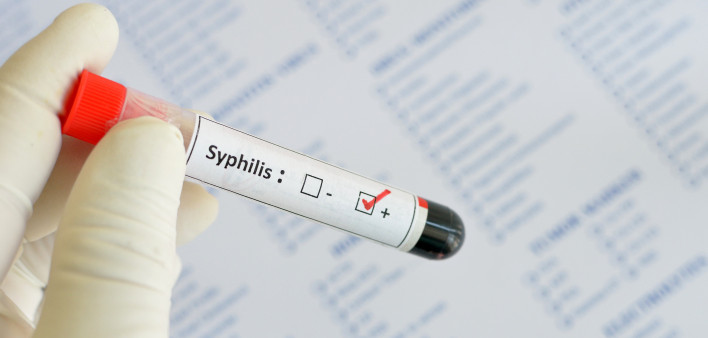As syphilis rates rise among heterosexuals, the sexually transmitted infection (STI) is increasingly diagnosed among those who use crystal meth or injection drugs, in particular heroin, and among people whose sexual partners inject drugs.
This finding suggests an overlap between the STI and drug epidemics in the United States.
Between 2013 and 2014, the national syphilis diagnosis rate increased 1.73-fold, from 5.5 to 8.5 cases per 100,000 people. The highest diagnosis rates are among men who have sex with men (MSM), who accounted for a majority of cases seen in 2017.
During this period, the syphilis diagnosis rate among women increased 2.56-fold, from 0.9 to 2.3 cases per 100,000 women, and increased among all men 1.66-fold, from 10.2 to 16.9 cases per 100,000 men.
Publishing their findings in the Morbidity and Mortality Weekly Report, Centers for Disease Control and Prevention (CDC) researchers analyzed national syphilis surveillance data covering 2013 to 2017 and assessed cases among women, men who have sex with women only (MSW) and MSM based on whether they reported drug use during the previous 12 months.
Among those diagnosed with syphilis, the proportion reporting use of meth, injection drugs and heroin more than doubled among women and MSW during the study period while remaining relatively stable among MSM.
In 2013, the proportion of women, MSW, MSM and all those diagnosed with syphilis who reported meth use was 6.2 percent, 5 percent, 9.2 percent and 7.9 percent, respectively. In 2017 those figures were 16.6 percent, 13.3 percent, 8 percent and 9.6 percent.
As for the proportions of people diagnosed with syphilis who reported having had sex with a person who injects drugs in 2013 and then in 2017, this included 5.5 percent and 12.4 percent of women, respectively; 3.6 percent and 9.3 percent of MSW, respectively; 4.3 percent and 5.2 percent of MSM, respectively; and 4.2 percent and 6.7 percent of all people diagnosed, respectively.
Looking at the proportions of those diagnosed with syphilis who reported using injection drugs, the study authors found that in 2013 and 2017, this included 4 percent and 10.5 percent of women, respectively; 2.8 percent and 6.3 percent of MSW, respectively; 3.5 percent and 3.5 percent of MSM, respectively; and 3.5 percent and 4.9 percent of all those diagnosed, respectively.
Lastly, the proportions of those diagnosed with the STI who reported heroin use in 2013 and 2017 were 2.1 percent and 5.8 percent among women, respectively; 0.8 percent and 2.7 percent among MSW, respectively; 0.7 percent and 0.8 percent among MSM, respectively; and 0.8 percent and 1.7 percent among all those diagnosed, respectively.
“Collaboration between sexually transmitted disease control programs and partners that provide substance use disorder services will be important to address recent increases in heterosexual syphilis,” the study authors concluded.
To read the CDC report, click here.







Comments
Comments